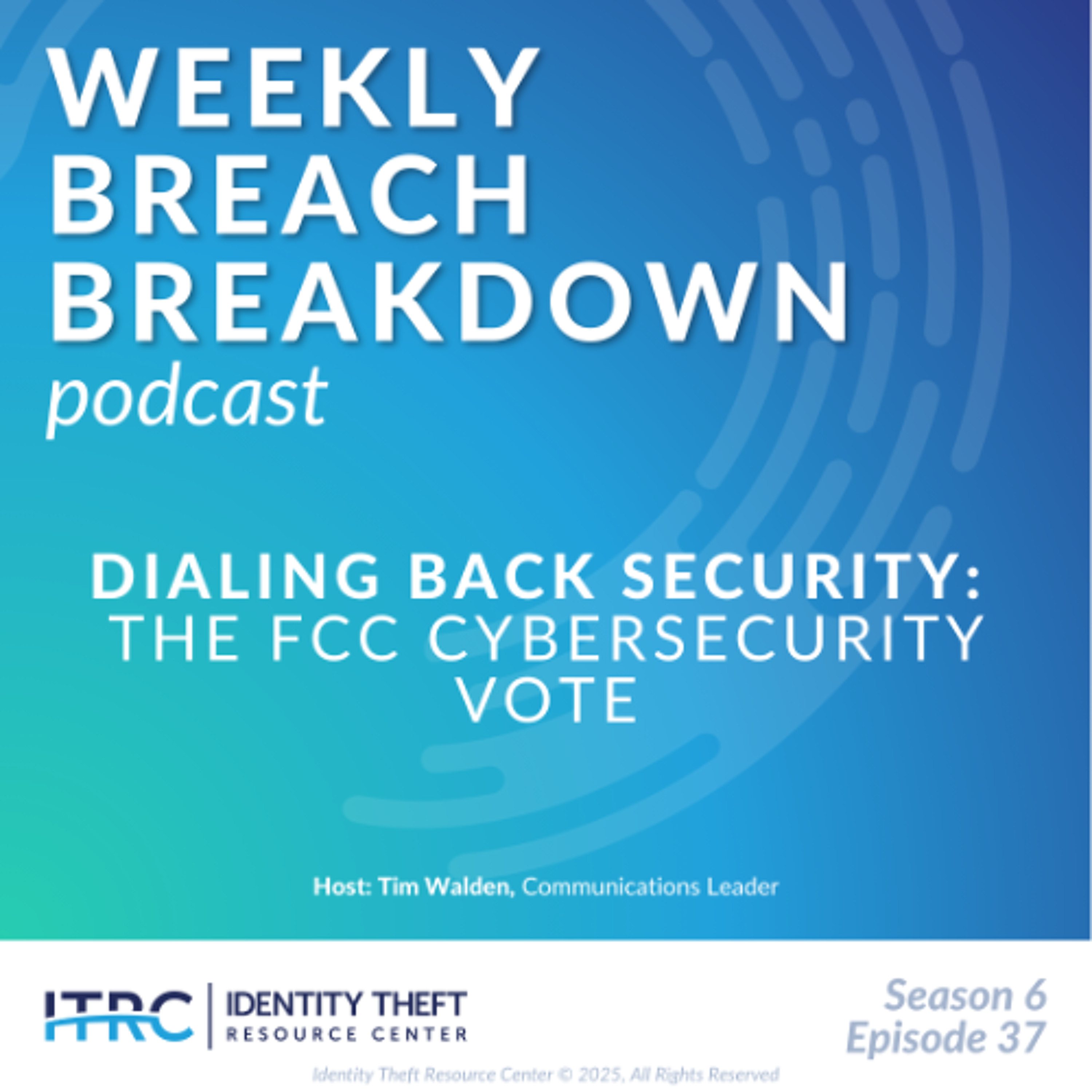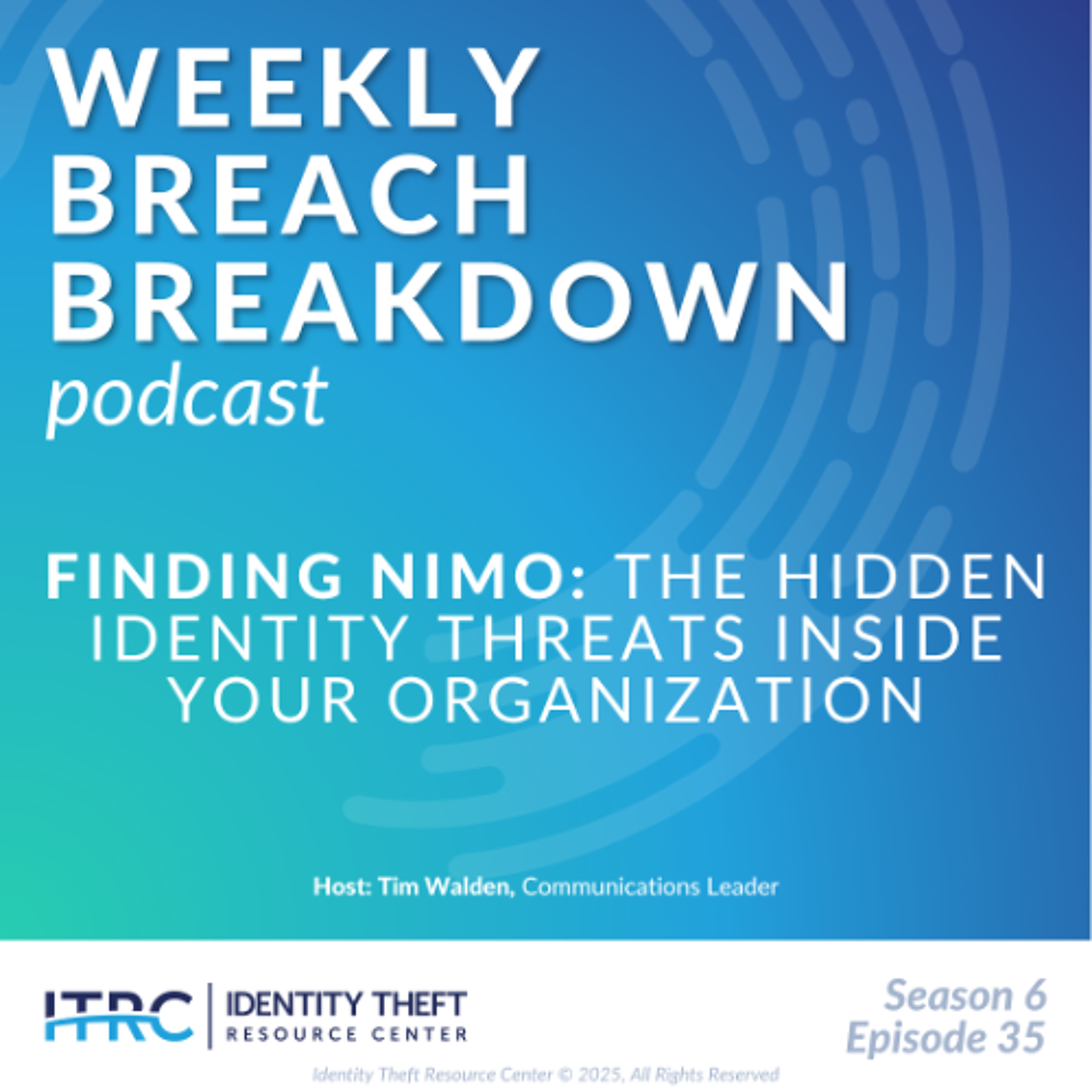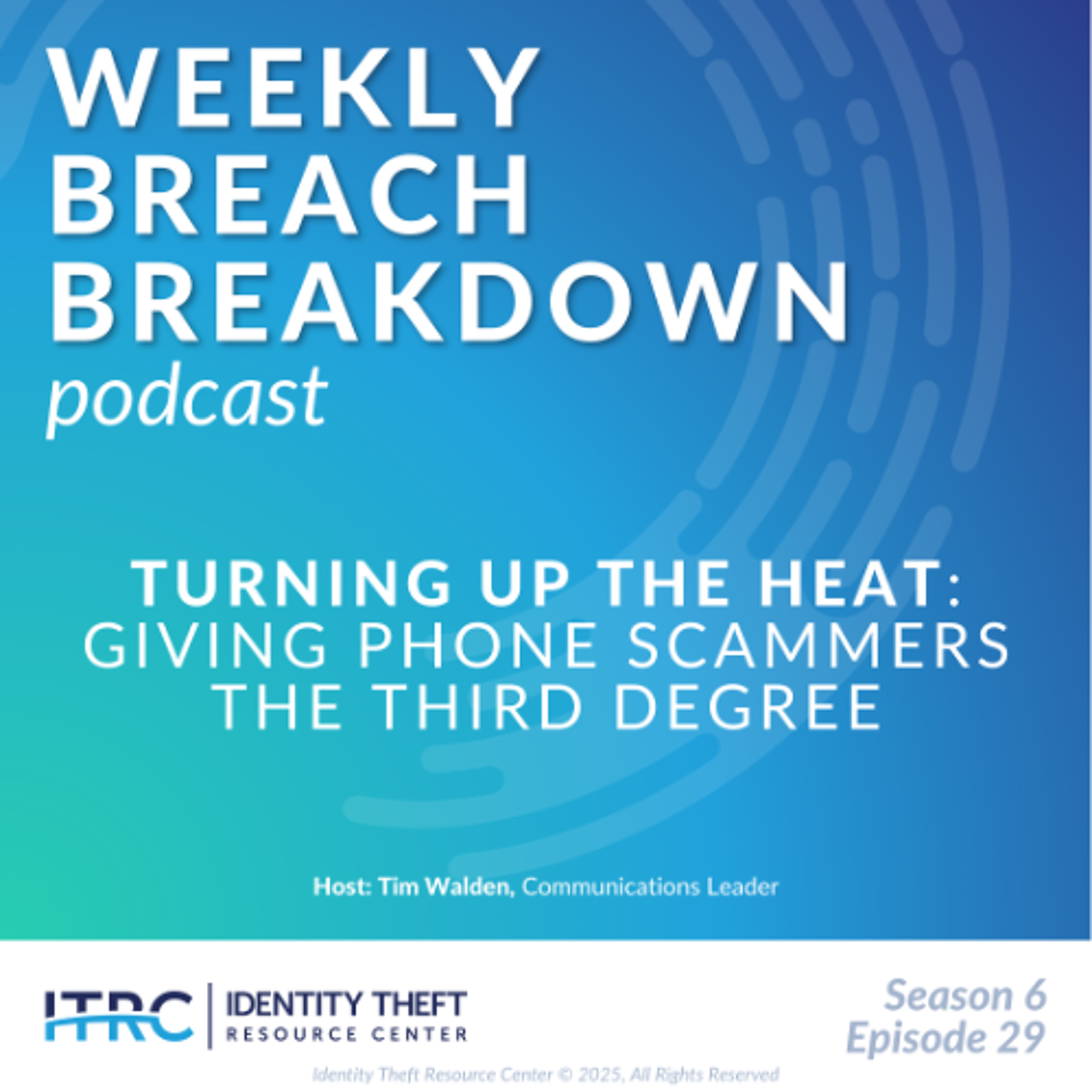Each week, we look at the most recent events and trends related to data security and privacy. This week, we’re discussing a new wave of tools designed to help us combat one of the oldest identity crime tactics: phone scams.
Show Notes
Follow on LinkedIn: www.linkedin.com/company/idtheftcenter/
Follow on Twitter: twitter.com/IDTheftCenter
Show Transcript
Welcome to the Identity Theft Resource Center’s (ITRC) Weekly Breach Breakdown for September 26, 2025. I’m Tim Walden. Thanks to SentiLink for their support of the ITRC and this podcast. Each week, we look at the most recent events and trends related to data security and privacy. This week, we’re discussing a new wave of tools designed to help us combat one of the oldest identity crime tactics: phone scams.
For decades, phone scammers have relied on voice calls and text messages to deceive people into giving their money or personal information. Think of all the “IRS” calls, fake tech support pitches, and lottery prize notifications you may have received in the past. In response, smartphone makers and telecom carriers began rolling out simple defenses, such as caller ID tags that flag “Scam Likely” or the ability to silence unknown numbers. Now, those defenses are getting an upgrade, powered by artificial intelligence.
Apple’s new iOS 26 includes a new Call Screening optional feature. Instead of interrupting you with every unknown number, the phone can quietly screen the call, ask the caller to identify themselves and explain why they’re calling, then show you a live transcript. You decide if it’s worth answering.
Android devices are taking it a step further. The Scam Detection tool listens in real time while you’re on the call. If the system hears red flags, like requests for your Social Security number or offers of free gifts, it alerts you with sounds, vibrations and visual cues. More importantly, this analysis happens on the device, not in the cloud, so the data stays private.
Carriers are also adding layers of protection. AT&T’s ActiveArmor app can block known phone scammers, label spam and even categorize calls by type. Verizon’s Call Filter includes a “Neighborhood Filter” that silences specific area codes. And T-Mobile’s Scam Shield has expanded with features like Scam ID. Each system helps you spot and stop phone scammers before you answer, though many of the most powerful features require users to turn them on manually.
Text messages aren’t being ignored, either. Google Messages now uses AI to recognize patterns used by phone scammers, even when criminals try to disguise them. Instead of looking for single words, it considers context: is the message pressuring you, claiming urgency or demanding money? That shift makes detection much harder for phone scammers to evade.
Finally, there’s an overlooked but very effective tool: Wireless Account Lock. Offered by AT&T, Verizon and T-Mobile, this free feature prevents major account changes, like SIM swaps, unless you unlock it first. Experts compare it to freezing your credit: a simple but powerful step to keep phone scammers out of your account. The catch? You have to opt in, and most people don’t realize it exists.
What does all this mean for you? It shows that technology is providing us with more tools to defend ourselves, but we must be aware of them and utilize them effectively.
Here are a few steps you can take today:
Turn on call screening and scam detection features in your phone’s settings or carrier app.
Be cautious with unexpected calls and texts. If something feels urgent or suspicious, don’t engage. Go directly to the source.
Stay informed about new tools and updates that make it easier to spot phone scammers.
If you want to learn more about protecting your information from phone scammers, or if you believe you’ve been the victim of an identity crime, the ITRC is here to help. You can speak with one of our expert advisors by phone or text, chat live on our website or send us an email during our normal business hours, 6 a.m. to 5 p.m. Pacific Time. Just visit www.idtheftcenter.org to get started.
Thanks again to SentiLink for their support of the ITRC and this podcast. Please like this episode and subscribe wherever you listen. We’ll be back next week with another edition of the Weekly Breach Breakdown. I’m Tim Walden. Until then, thanks for listening.
Listen On
Also In Season 6
-

The Fraudian Slip Podcast: Identity Theft Resource Center - 2025 Business Impact Report - S6E11
Welcome to the Fraudian Slip, the Identity Theft Resource Center’s (ITRC’s) podc -

The Weekly Breach Breakdown Podcast: Dialing Back Security – The FCC Cybersecurity Vote - S6E37
Welcome to the Identity Theft Resource Center’s (ITRC’s) Weekly Breach Breakdown -

The Weekly Breach Breakdown Podcast: A(I) House of Cards – ChatGPT Issues Impact Users - S6E36
Welcome to the Identity Theft Resource Center's Weekly Breach Breakdown for Nove -

The Weekly Breach Breakdown Podcast: Finding NIMO – The Hidden Identity Threats Inside Your Organization - S6E35
A new analysis by cybersecurity researcher Michael Robinson examined over a thou
